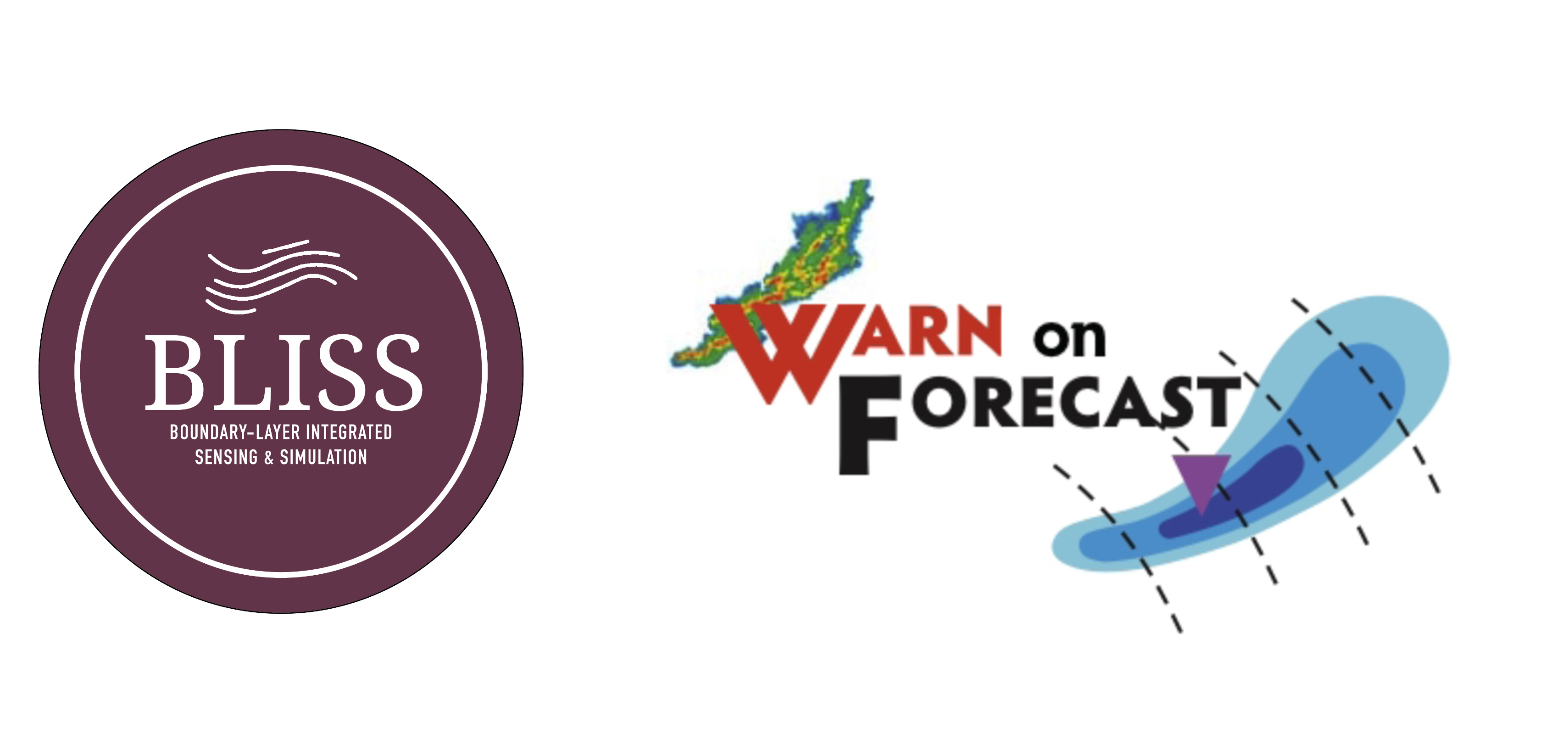BLISS and WoFS: A Powerful Collaboration in Atmospheric Research
The BLISS (Boundary Layer Integrated Sensing and Simulation) team is proud to highlight our ongoing collaboration with the National Severe Storms Laboratory’s (NSSL) Warn-on-Forecast System (WoFS) team. This partnership is advancing our understanding of severe weather and improving forecast capabilities through three main areas of collaboration.

1. TRACER Project: High-Resolution Simulations
As part of the TRacking Aerosol Convection interactions ExpeRiment (TRACER) project, BLISS team members worked alongside the WoFS group to produce a suite of WoFS-like simulations for several case days. These simulations focused on:
- Sea breeze phenomena
- Sea breeze-related convection initiation Combined with the dense observational network deployed during TRACER, this effort has resulted in a valuable 4D dataset ideal for process studies. This comprehensive dataset allows researchers to:
- Analyze atmospheric processes in unprecedented detail
- Validate and improve numerical weather prediction models
- Enhance our understanding of aerosol-convection interactions
2. UAS Profiles for Data Assimilation
Our collaboration extends to field campaigns, where BLISS has been collecting Uncrewed Aerial System (UAS) profiles in network configurations. These efforts have been part of multiple projects, including:
- VORTEX-USA/PERiLS project
- OUTFLOW project The UAS profiles are collected ahead of and near high-impact weather events, providing crucial data for assimilation into forecast models. Early results, particularly from the Rolling Fork EF4 tornado case, are promising. They suggest that these profiles can provide important information in the low levels above the surface for convection-allowing models.
3. Next-Generation Observation Networks
Perhaps our most forward-looking collaboration involves the investigation of next-generation observation networks. Using Observing System Simulation Experiments (OSSEs) based on a WoFS-like simulation framework, we’re studying how future networks should be designed. Key questions we’re addressing include:
- Optimal spacing of observation points within networks
- Types of observations required for maximum impact
- Frequency of observations needed
- Potential for flexible, mixed-type observation networks This work is made possible by the collaboration of experts in observations, numerical weather prediction, and data assimilation from both BLISS and the WoFS team.
Impact and Future Directions
The collaboration between BLISS and the WoFS team is driving significant advancements in atmospheric science and weather forecasting. By combining our expertise in boundary layer processes, observation technology and techniques, and high-resolution modeling, we’re:
- Improving our understanding of severe weather initiation and evolution
- Enhancing data assimilation techniques for better short-term forecasts
- Paving the way for more effective and efficient observation networks As we continue this collaboration, we anticipate further breakthroughs that will contribute to more accurate and timely severe weather predictions, ultimately helping to protect lives and property